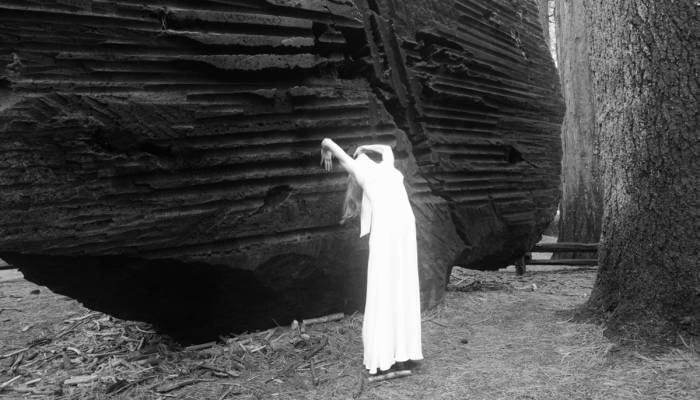Sixto Rodríguez: the Improbable Fame of an Artist
His uncertain fame and public recognition made Sixto Rodríguez confront the delicate balance between personal fortune and the authenticity of talent.
The music world is famously cruel. Throughout history, once and again we have seen cases of composers, interpreters and singers whose talent has only been recognized after their death, in that posterity which, so we are told, does justice to everything and leaves stanting only that which transcends the beating of critics and time. Such is the case of Sixto Rodríguez, an American singer born to Mexican parents who had a short music career (recording a couple albums in the 1970’s and going on a brief Australian tour), and flirted briefly with fame but soon was pushed aside by a wave of new faces and voices.
The son of migrants who left their country in the 20’s, Sixto was born in 1942 in Detroit, Michigan, to a lower middle class family who raised him in poverty and yet cultivated in him an interest in the underground culture, both of which would later be reflected in his music. Somehow, Rodríguez resolved to be a successful musician from very early in life, and in 1967 recorded his first single, “I’ll Slip Away,” with a small record company with a big name: Impact. Three years later he signed with Sussex Records, which was part of the better-known Buddha Records, with which he later recorded Cold Fact (1970) and Coming from Reality (1971); both influenced by Blues and Rock.
Before this, which he considered a failure, Sixto decided that his music career was over. His decision, however, was perhaps too hasty, as he soon gained unexpected popularity in South Africa, Zimbabwe, New Zealand and Australia, which goes to show the capricious nature of success: met with disdain on one continent and revered on a remote other.
With his unexpected following, Rodríguez went on an Australian tour with the Mark Gillespie Band, and even started to work on his next album, Alive, whose title was a sort of wink at the strange rumor –perhaps inspired by his few years of silence– that he had died. But after his Australian tour he again went into obscurity, dedicating his time to studying for his BA in Philosophy at Wayne State University in Ohio and his new and unexpected profession in demolition. What perhaps is most surprising is the revelation his daughter made in the 1990’s: that Sixto Rodríguez was a musical icon in South Africa, a figure with a cult Internet following and loads of fans despite the fact that he had only, decades ago, distributed a couple albums to the country.
Capitalizing on the discovery, Rodríguez, almost 60 years old, went on a six-concert tour in South Africa, even producing a documentary about the experience: the Dead Men Don’t Tour: Rodríguez in South Africa 1998. It was a sort of final resurrection of the musical success Rodríguez had been looking for his whole life. With the re-release of his albums, new international tours scheduled as well as television appearances, this brilliant man is now battling between keeping the authenticity of his music and living out a long-lived dream.
We recommend the now very popular documentary Searching for Sugar Man, by Swedish director Malik Bendjelloul, in which all of the above is profusely and endearingly put.
Related Articles
When ancient rituals became religion
The emergence of religions irreversibly changed the history of humanity. It’s therefore essential to ask when and how did ancient peoples’ rituals become organized systems of thought, each with their
Larung Gar, the valley that is home to thousands of Buddhist monks
If we think about the monastic life it is very probable that we think about solitude, seclusion, silence and a few other qualities whose common denominator is the appropriate isolation for mediation
Dialogue with the Dalai Lama on science and spirituality
The Dalai Lama has been interested in science since he was a child. Over the years he’s visited many laboratories and has attended conferences that discuss consciousness from the scientific point of
A New Year's resolution for the earth
Worrisome quantities of waste are generated by human populations. Especially in cities, these have reached unprecedented and alarming levels. A largely uncontrolled practice, it affects everything on
The Dark Mountain Project: or how literature can confront ecocide
One impulse from a vernal wood May teach you more of man, Of moral evil and of good, Than all the sages can. Wordsworth, “The Tables Turned” (fragment) Words are elementary. The only reason we can
Are there no women in the history of philosophy?
Do only men philosophize? This could sound like a silly question, but if we quickly review the names of philosophers, from Aristotle to Slavoj Žižek, it would appear to be an exercise that is
Things that are about to disappear: photography as environmental conservation
Cristina Mittermeier is the founder of the International League of Conservationist Photography (iLCP), and is at the front of a modern movement to use photography with environmental purposes. Her work
Architecture And Music; An Affair That Acts On The Matter
A composition is like a house you can walk around in. — John Cage Perhaps music, more than the art of sound, is the art of time. That’s why its communion with space, and architecture, is so often so
Psycho-geography (On The Ritual Casting of a City)
Mrs. Dalloway walked down the streets of London guided by an “internal tide” that made her stop somewhere, enter a store, turn at the corner and continue her journey, as if she were adrift. La dérive
A Theme Park Inspired by Hayao Miyazaki is About to Open …
One of animation’s most spectacular exponents, Hayao Miyazaki, is the artist who transformed the direction of traditional animation forever.










